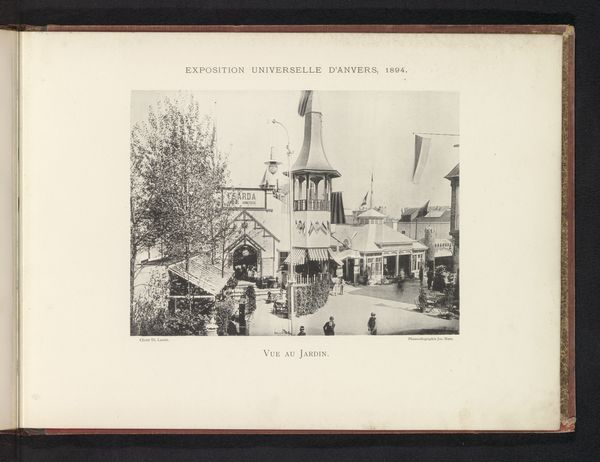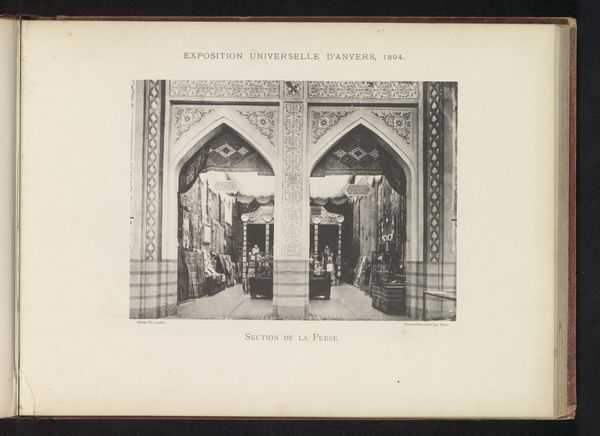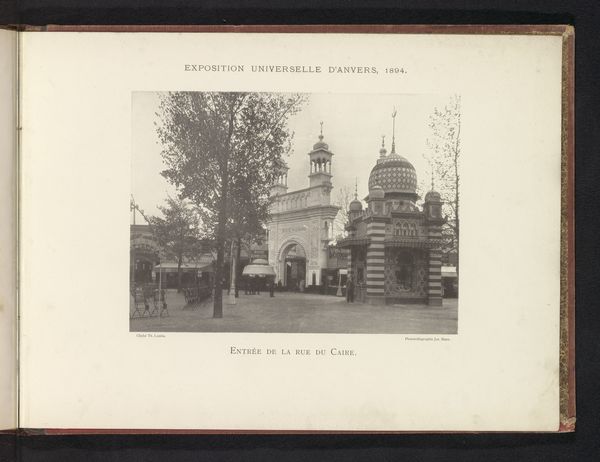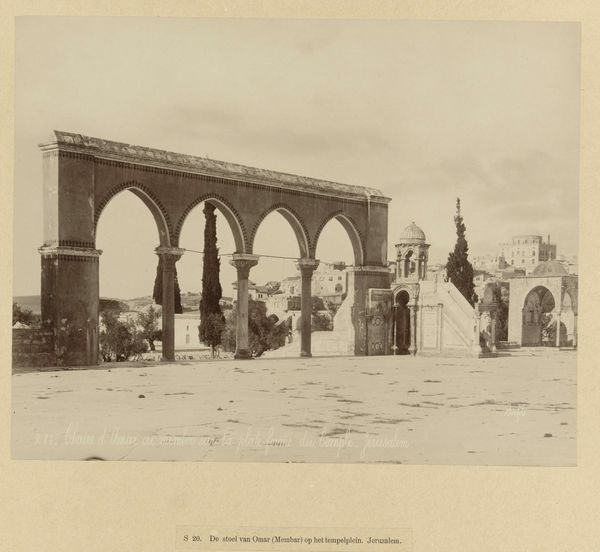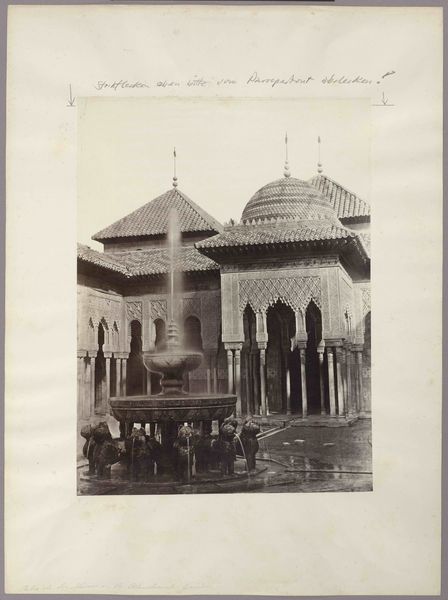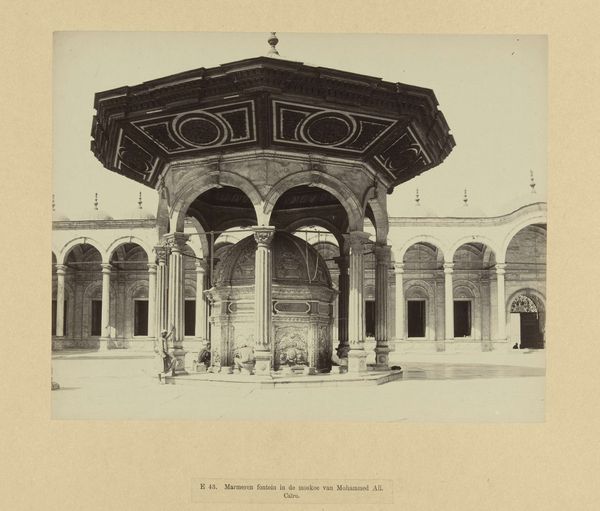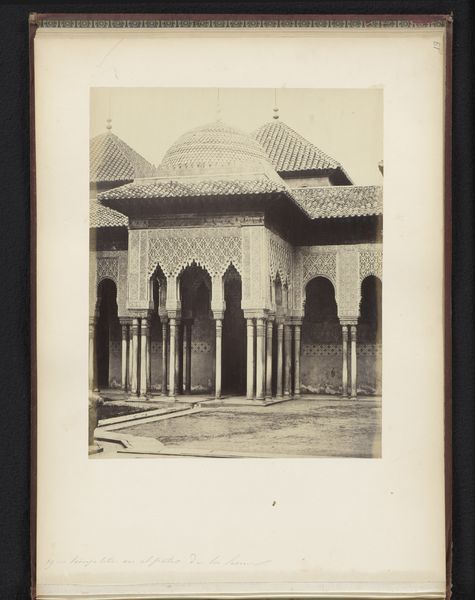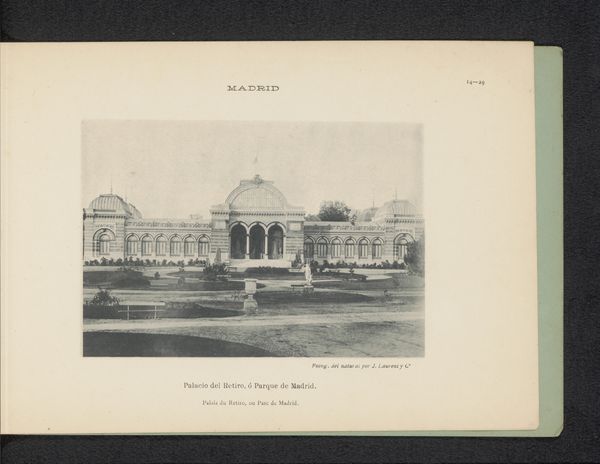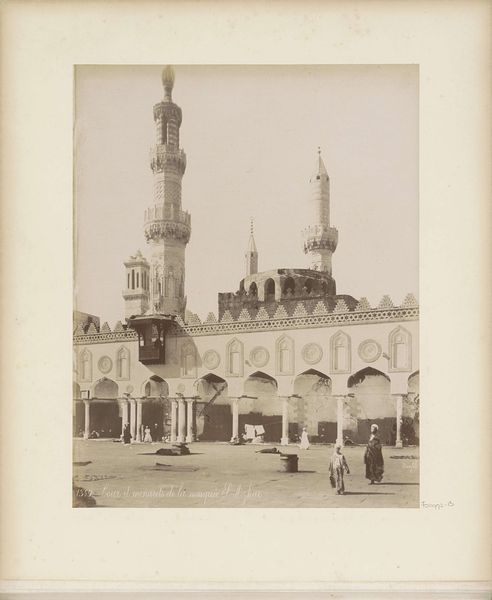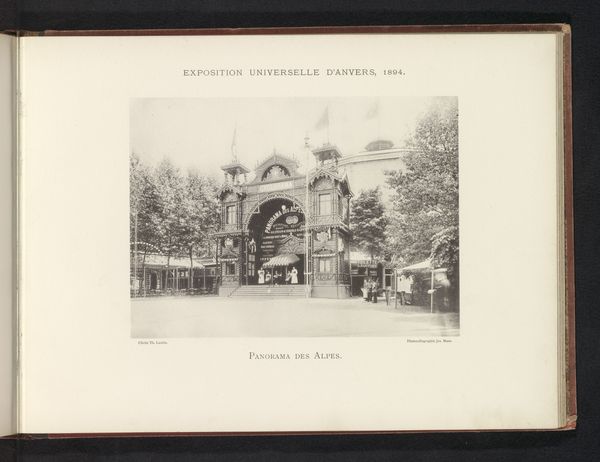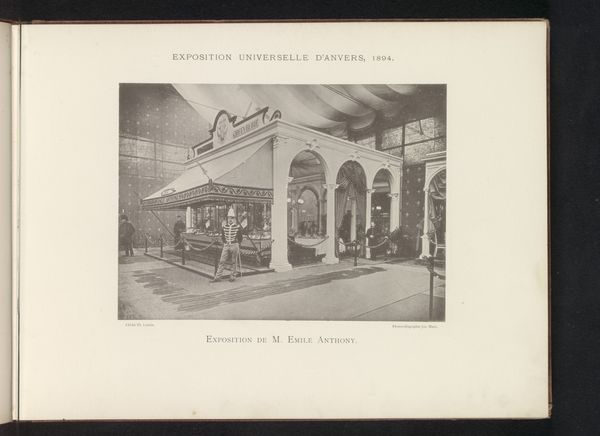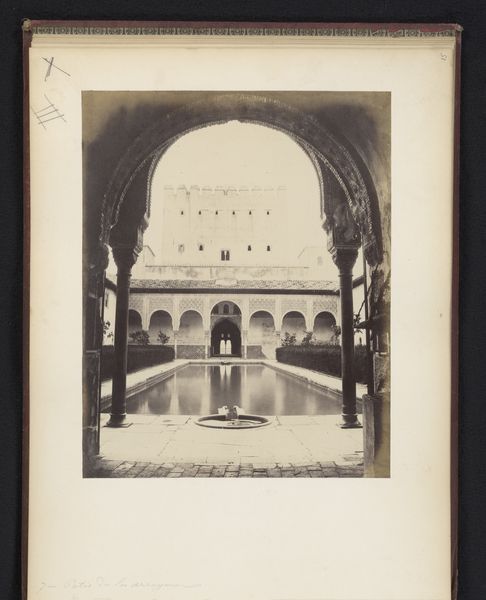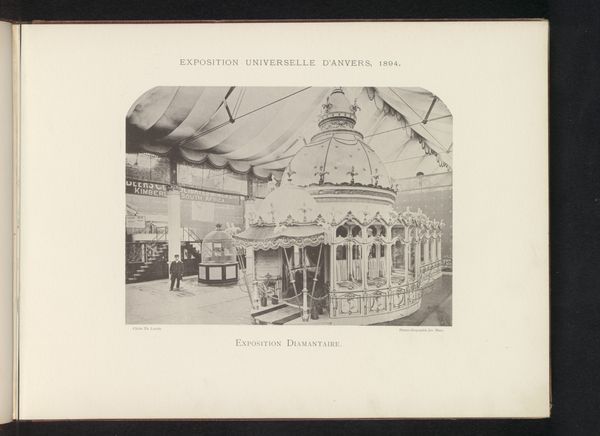
Exterieur van het paviljoen van Algerije op de wereldtentoonstelling te Antwerpen 1894
0:00
0:00
print, photography
# print
#
landscape
#
photography
#
coloured pencil
#
building
Dimensions: height 163 mm, width 219 mm
Copyright: Rijks Museum: Open Domain
Curator: This photograph, taken in 1894 by Th. Lantin, showcases the exterior of the Algerian pavilion at the World Exhibition in Antwerp. Editor: My immediate reaction is how…constructed it feels. Almost like a theatrical stage set, with the very geometric architecture against that big, flat space. Curator: Well, world exhibitions were about displaying an idealized version of cultures and progress. Notice the prominence of Islamic architectural motifs; the tall minaret-like tower, the intricate dome of the pavilion…these project a romantic, yet simplified, view of Algeria. Editor: Simplified indeed, perhaps even exoticized for European consumption. Algeria at this time was, of course, under French colonial rule. This pavilion becomes an interesting representation, doesn’t it? An "Algeria" constructed within a colonial framework, for the colonial gaze. Curator: Absolutely. The placement of these traditional Islamic visual symbols amidst a space designed for a globalized audience tells a compelling story about the cultural exchange and also the power dynamics that characterized the era. It highlights a fascination with “the Orient” prevalent during the period, almost creating a fantasy space. Editor: And it’s a very sanitized fantasy, isn't it? No chaos, no struggle, just clean lines and picturesque details. The absence of Algerian voices and perspectives in the pavilion’s creation speaks volumes about the colonial project. Curator: You're right. The symbols displayed, while visually striking, omit the full spectrum of Algerian history and lived experience. Instead, it seems curated for European ideals. Even the two figures in Western dress amplify this notion of cultural performance and interaction. Editor: Precisely. The photograph acts as a potent reminder that what we often perceive as cultural exchange can be deeply intertwined with histories of oppression and power imbalance. Curator: Understanding these visual complexities in historical images helps us interpret them, while also contextualizing the relationship between aesthetics, symbolism, and ideology within intercultural interactions. Editor: I agree. By unveiling the complex socio-political forces that shape art like this photograph, we foster critical engagement and a more nuanced understanding of our world’s interconnected, sometimes conflicted, past.
Comments
No comments
Be the first to comment and join the conversation on the ultimate creative platform.
